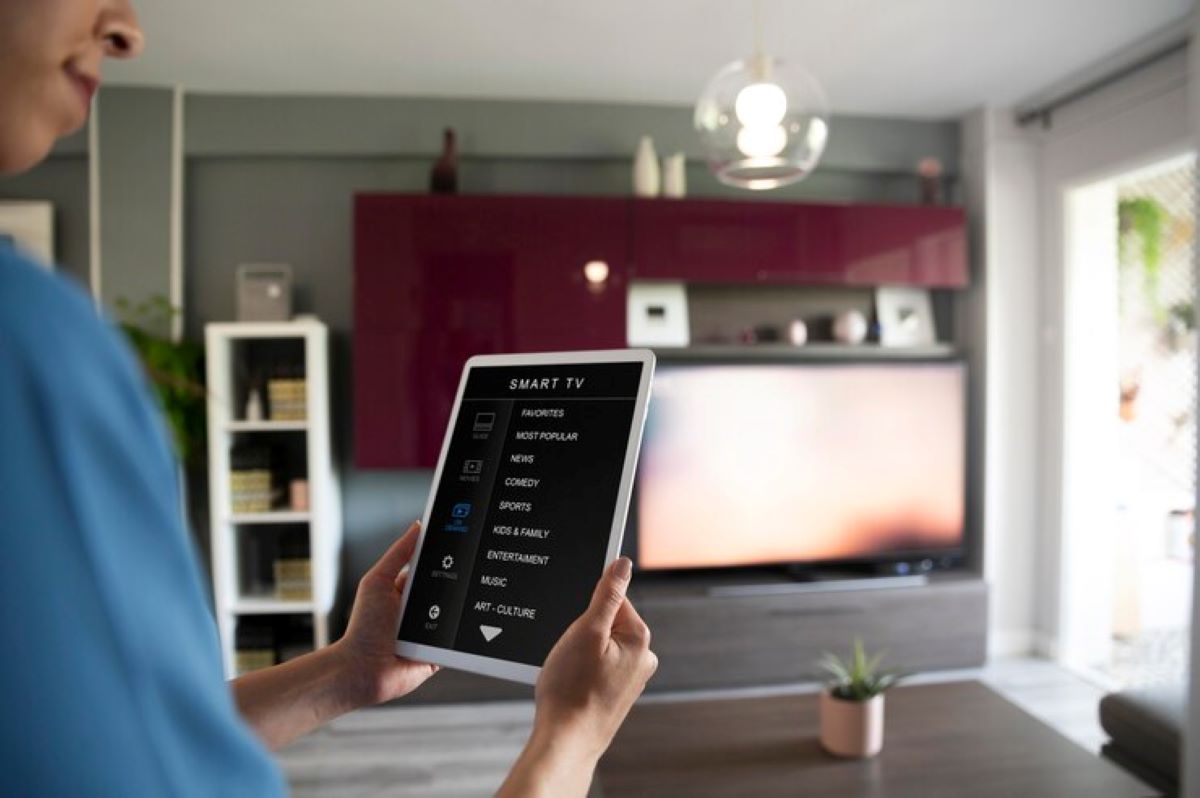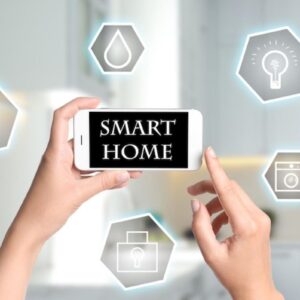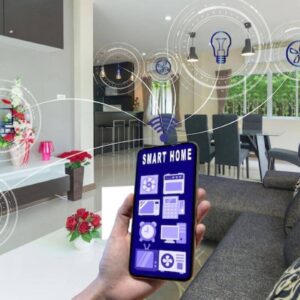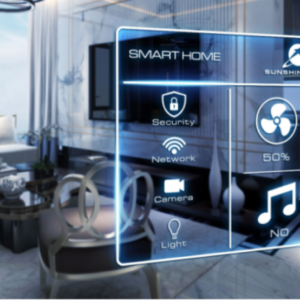Introduction
Smart home technology refers to the integration of various devices and systems within a home, designed to enhance overall efficiency, security, and convenience. These interconnected devices communicate with each other, offering users the ability to control and monitor their homes remotely. From intelligent thermostats to automated lighting and security systems, the evolution of smart home technology has transformed traditional living spaces into hubs of innovation.
The evolution of modern smart homes signifies a paradigm shift in how we interact with our living spaces. What began as a novel idea has evolved into a sophisticated network of interconnected devices, offering an unprecedented level of control and customization. This evolution holds the promise of enhancing everyday living, providing solutions to common challenges, and shaping the future of home automation.
1. The Early Stages: Foundation of Smart Home Technology
A. Inception and Pioneering of Smart Home Technology
The journey of smart home technology traces back to the early 20th century, with the invention of labor-saving devices such as washing machines and refrigerators. However, the true foundation was laid with the introduction of home computers in the 1970s and the concept of home automation. Pioneering technologies, like X10, enabled the control of devices through powerline wiring.
B. Initial Challenges and Adoption
Despite early innovations, modern smart homes faced initial challenges, including high costs and limited interoperability. The adoption was slow due to the complexity of installation and the perception that these technologies were reserved for luxury homes. However, as technology advanced and costs decreased, the stage was set for a broader and more impactful evolution.
2. Evolutionary Phases of Smart Home Technology
A. Integration of IoT Advancements
The true evolution of smart home technology gained momentum with the integration of the Internet of Things (IoT). This phase saw devices becoming interconnected, allowing them to communicate and share data seamlessly. Smart thermostats, lighting systems, and security cameras could now be controlled remotely via smartphones, laying the groundwork for a more integrated and intelligent living environment.
B. Rise of Connected Devices
As IoT advancements continued, the market witnessed a surge in the availability of connected devices. From smart fridges that could create shopping lists to voice-activated virtual assistants, homes have become increasingly equipped with intelligent gadgets. The rise of connected devices not only enhanced convenience but also paved the way for a more intuitive and responsive home environment.
C. Impact on Everyday Living
The impact of modern smart homes on everyday living has become increasingly apparent. Automated routines and personalized settings allowed users to tailor their living spaces to their preferences. Energy consumption became more efficient, security systems became more sophisticated, and mundane tasks were automated, freeing up time for more meaningful activities.
3. Modern Living Solutions Enabled by Smart Home Technology
A. Enhanced Security and Surveillance
One of the standout features of modern smart homes is the enhancement of security and surveillance. High-tech cameras, smart doorbells, and motion sensors provide real-time monitoring, and many systems offer advanced features like facial recognition and immediate alerts. These innovations not only deter potential intruders but also provide homeowners with peace of mind.
B. Energy Efficiency and Sustainability
Smart home technology has played a crucial role in promoting energy efficiency and sustainability. Smart thermostats optimize heating and cooling based on occupancy, and smart lighting systems adjust brightness according to natural light conditions. This not only reduces energy consumption but also contributes to a more sustainable and eco-friendly lifestyle.
C. Convenience and Accessibility
The essence of modern smart homes lies in its ability to offer unparalleled convenience and accessibility. From controlling home appliances remotely to setting up automated routines, users can manage their homes effortlessly. Voice commands, mobile apps, and centralized control hubs ensure that smart homes are accessible to users of all technological expertise.
4. The Future Landscape: Emerging Trends and Innovations
A. Artificial Intelligence in Smart Home
The future of smart home technology is deeply intertwined with the integration of artificial intelligence (AI). AI algorithms analyze user behavior and preferences, allowing the system to learn and adapt over time. This evolution transforms smart homes into predictive environments, anticipating user needs and automating tasks seamlessly.
B. Interconnectivity and Seamless Automation
The next frontier in smart home evolution revolves around interconnectivity and seamless automation. As more devices become standardized and interoperable, users can expect a more cohesive and integrated experience. Imagine a home where the thermostat communicates with the security system, and the lights coordinate with your daily routine, creating an environment that anticipates and responds to your every move.
C. User-Friendly Interfaces and Accessibility
Future smart homes will prioritize user-friendly interfaces, ensuring accessibility for users of all ages. Voice commands, intuitive apps, and streamlined control panels will become commonplace, making it easier for individuals with varying levels of technological familiarity to embrace and benefit from smart home technology.
5. Challenges and Considerations in Smart Home Technology
A. Privacy and Security Concerns
With the increasing connectivity of devices, the issue of privacy and security becomes paramount. Modern smart homes users are becoming more conscious of data protection and the potential vulnerabilities associated with interconnected systems. Striking a balance between convenience and safeguarding personal information remains a challenge for the evolving landscape of smart home technology.
B. Standardization and Interoperability
The diverse array of smart home devices often comes with different communication protocols and standards. The challenge lies in achieving universal standardization and interoperability to ensure that devices from different manufacturers can seamlessly communicate and work together. Efforts towards creating industry standards are essential for the continued growth of smart home technology.
C. Sustainability and Environmental Impact
As smart home technology becomes more prevalent, addressing its environmental impact becomes crucial. Manufacturers are under increasing pressure to design products with longevity, recyclability, and energy efficiency in mind. Striving for sustainability is not only an ethical consideration but a necessity to ensure that the benefits of smart home technology do not come at the expense of the environment.
6. Case Studies: Successful Implementation of Smart Home Solutions
A. Real-world Examples of Smart Home Technology Integration
Smart Security Systems: Companies like Ring and Nest have revolutionized home security, offering integrated systems that include video doorbells, security cameras, and smart locks. These systems provide users with real-time monitoring and the ability to control access to their homes remotely.
Energy-Efficient Homes: Builders and architects are increasingly incorporating smart home features into new construction. Homes equipped with smart thermostats, solar panels, and energy-efficient appliances showcase how technology can contribute to sustainable living and reduced utility costs.
B. User Experiences and Benefits
Convenience:
Users often highlight the convenience of smart home solutions. From adjusting the thermostat without leaving the couch to receiving instant alerts on their smartphones, the convenience factor significantly improves daily living.
Peace of Mind:
The enhanced security features contribute to a sense of peace of mind. Users can remotely check the status of their homes, receive notifications about potential issues, and even communicate with visitors through smart doorbell systems.
Conclusion
In the ever-evolving landscape of smart living, the journey from the inception of home automation to the interconnected and AI-driven ecosystems has been transformative. This symphony of technology and human experience continues to redefine the way we interact with our living spaces. As we stand on the precipice of a new era, the harmonious melody of smart living invites us to not only embrace innovation but to actively shape its ethical dimensions. The future is a canvas awaiting our conscious choices and collaborative efforts, resonating with the shared aspirations of a connected, sustainable, and enriching way of life with smart home technology.
Frequently Asked Questions (FAQ’s)
Q: How can I enhance the security of my smart home technology devices?
Ans: Regularly update firmware, use strong passwords, and research manufacturers’ privacy policies.
Q: What steps promote sustainability in a smart home technology?
Ans: Opt for energy-efficient devices, consider solar panels, and implement automated systems for optimal energy use.
Q: Are smart home technology devices compatible across different brands?
Ans: Compatibility varies; check for interoperability and consider devices from the same ecosystem.
Q: How do I integrate smart home technology into an older home?
Ans: Start with basic devices and gradually upgrade; some retrofit solutions exist for older homes.
Q: What security measures protect my smart home?
Ans: Use secure Wi-Fi, enable two-factor authentication, and regularly update device software for enhanced security.







